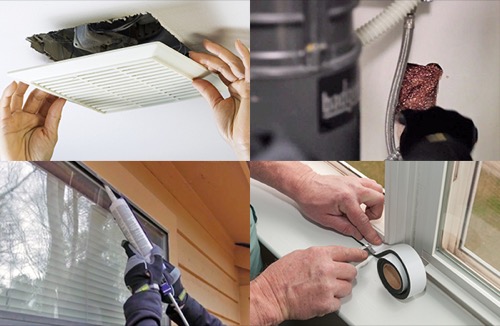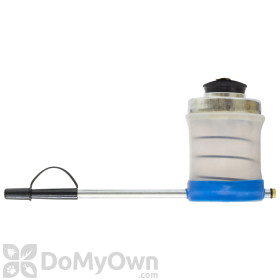You Must Practice Sanitation & Exclusion
When you are dealing with stink bugs, insecticides alone usually will not provide complete control. You must follow the exclusion and sanitation steps laid out in the pest prevention guide for the most effective stink bug control.
Another way we can provide help in keeping stink bugs away is through the use of an Overwintering Pest Control Kit. This convenient bundle of products makes it easy for homeowners to keep out overwintering pests including stinkbugs, Asian lady beetles, and more. These kits include: liquid insecticide, insecticide dust, and a hand bellow duster.
Follow the steps below to learn how to use the Overwintering Pest Control Kit.
Treat the Perimeter of Your Home with an Insecticide
Treat the outside of your home with a liquid insecticide labeled for overwintering pests, such as Talstar P before the first frost of the year. Mix the insecticide with water in a sprayer according to the directions on the label and spray the following areas around the outside of the structure:
- Spray 3 feet up and 3 feet out from the foundation of the building around the entire perimeter of the home.
- On the sunniest side of the house, spray up to 3 feet onto the side of the house. The sunniest side of the house is where overwintering pests will harbor before they move inside.
- Spray around door and window frames
- Spray in cracks and crevices around the home's foundation
- Spray around vents leading outside
- Spray where caulking around doors and windows has opened up
- Spray in soffits, eaves, and vents
- Spray where utility pipes and wires enter the home
- Spray around outdoor light fixtures
Products needed for Step 1
Treat the Inside of Your Home with Insecticide

Inside the home, use the insecticide spray to spot treat areas where stink bugs may gain entry or hide for the winter. Do not treat entire floors, walls, or rooms with this insecticide. Focus on these key areas inside the home:
- Spray around door and window frames
- Spray where utility pipes enter the home
- Spray underneath appliances and beneath sinks
Keep pets and children away from areas being sprayed until spray has dried (1-2 hours).
Use Insecticide Dust in Cracks and Crevices
To boost the effectiveness of your liquid insecticide treatment, we recommend also using an insecticide dust like EcoVia WD in hard-to-reach spots where stink bugs may take shelter. Apply one or two small puffs of the dust per treatment spot. Using too much insecticide dust in an area can render the dust ineffective.
Insecticide dusts offer a long-lasting residual effect, but those effects may take longer to show results. We recommend using a dust in addition to a liquid insecticide for a combination of effects and the best overall results.
To treat your home with insecticide dust, select the product of your choice and read the label completely before applying. Fill a bellow hand duster halfway and dust these areas:
- Around door and window frames
- In wall voids behind outlets and switches
- Where cables and pipes enter your home
- Around eaves and soffits
- In the corners of attics and closets
- In cracks and crevices around the home
- Underneath appliances
- Below sinks
- Where pipes enter the wall
Practice Integrated Pest Management

Integrated Pest Management is a strategy that recommends actions homeowners can take to prevent the most common insect pests from finding their way into the home. Following these simple steps can be a big help in your efforts to keep overwintering pests out of your home.
Some basic steps include:
- Create a barrier zone by sweeping pine straw, mulch, or bark 6 inches away from the foundation of the home
- Clip back branches and bushes so they do not touch the house or structure
- Add door sweeps to external doors
- Repair torn window screens
- Add caulk to cracks and crevices around the home
- Clean gutters to remove debris
- Add steel mesh to where utilities enter your home
- Keep your home clean
- Vacuum often to keep your home free of crumbs
Learn more about integrated pest management in our general pest prevention guide.









